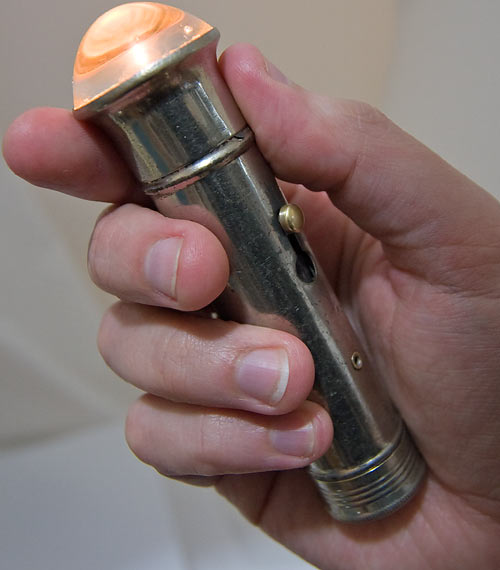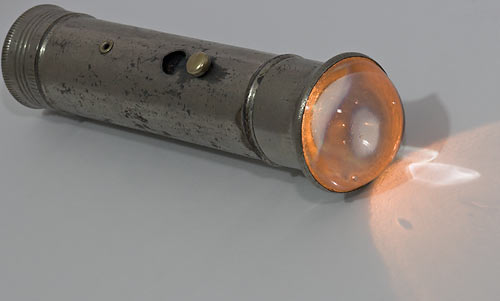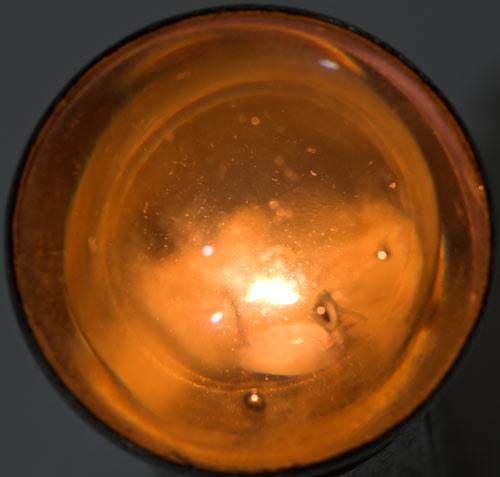Gakken's Mechamo Centipede is, as I explained in my review of it, a very cool toy.
But, as the following video demonstrates...
...it's not really in the same class as the Tyco N.S.E.C.T. Robotic Attack Creature.
I think a ludicrous name is, in this case, entirely justified. The RAC, as I'll call it for short, is big and beefy and obviously always in a very bad mood.
The RAC was one of the big toys of Christmas 2006, and I didn't manage to find one for a reasonable price. But then, in late 2007, a new-in-box unit showed up on eBay here in Australia and I picked it up for $AU75 delivered, which is well under the list price.
I had no idea the thing was going to be so big.
It's only a little longer than the 1.1-kilogram mostly-aluminium Centipede, but it weighs more than 2.3 kilos. That's more than your typical backyard-basher electric 10th-scale R/C truck.
I like the RAC's gait, too. The Centipede's mesmeric millipede-like circular gait is more interesting, but the Tyco robot walks not unlike a real beetle. Its legs whip forward and whack down onto the floor, then sweep backwards more slowly to propel the thing. The legs don't lift far enough to make the RAC capable of conquering much more than medium-pile carpet, but like the Centipede, it shouldn't have any trouble making it over trailing cables or rug fringes.
Oh, and that racket it makes on the hardwood floor? It's louder in person.
And it's not because of the one-piece plastic legs. The tips of the legs are actually covered with rubber. I think I might give them soft silicone socks, or something.
The pincers on the front are controlled by one of two index-finger triggers on the remote control. They're strong enough to allow the RAC to pull about as much weight as it can push, as long as there's something for it to bite onto.
The missile shooter (which is depicted as shooting sucker darts, but in my case just came with little plastic tubes with rubber bumpers on the front) is deployed by a safety-covered glowing switch on the remote (if you hold the switch down, it retracts again - I did that once by accident in the above video), and fired with the other trigger.
The launcher doesn't have much range, or any accuracy. But c'mon, people. It's a missile shooter! It pops up from under the bug's wing covers! And the RAC's eyes turn red when it does! That's awesome!
The RAC has a kid-sized transmitter that runs from a nine volt battery, just like every other cheap radio controlled toy. But that's the end of the bad news, electricity-wise.
First, yes you can get two and have them fight. My green model has a 27MHz radio, but there's also a blue one that's 49MHz.
And the RAC itself runs not from a horde of AA batteries, but from a standard six-cell rechargeable stick pack with a white nylon plug on it, of the sort you can buy from any hobby store. The bundled pack is a NiCd unit of unspecified capacity, and you also get a plugpack overnight charger. A proper hobby charger will (and in my case, did) charge the bundled pack much faster, and higher-capacity stick packs will also work fine in the RAC, as long as they've got the right plug.
Oh, and one 9V battery for the transmitter is included as well. Classy.
And now that I've gotten you all excited... I think Tyco's discontinued the Robotic Attack Creature. There are a couple of other toys in the N.S.E.C.T. line that still seem to be available from major retailers - Amazon, for instance, currently have a "Nano" version of the RAC for cheap, and some thing with a tail too. But the N.S.E.C.T. line doesn't seem to exist on the Mattel site any more. There's just this sad remnant.
Fortunately, though, plenty of dealers seem to still have at least some stock of the RAC, and some of the prices are very reasonable.
I haven't played with the thing for very long yet, or taken it to bits, so I don't know whether it's been discontinued because all of the legs always fall off after half an hour, or because of the abominable foot-racket, or because kids just didn't dig something that can't tear around fast enough to break when it hits a chair. Mattel/Tyco have remedied this last with the even more ridiculous looking Tri-Clops, which should be of considerable attention to nerds because it is, I think, the first mass-market toy with proper omnidirectional wheels.
But that, of course, means that the Tri-Clops doesn't have legs. So although it does seem to work pretty well...
...I can't say I'm very excited about it.
(Actually, looking at Amazon again, I note that the 27MHz and the 49MHz Tri-Clops toys are currently discounted by seventy-five per cent. So if you live somewhere to which Amazon will deliver things other than books and DVDs, I think you're now practically obliged to buy one.)
The Robotic Attack Creature is probably not nearly as hackable as the straightforward, open-chassis Centipede. It's also completely devoid of educational value, since unlike the Centipede, it comes assembled and ready to go, rather than as a box full of (surprisingly easy to assemble) pieces.
If you're looking for something to keep your cat on its toes, though, the RAC gets both thumbs up from me.



